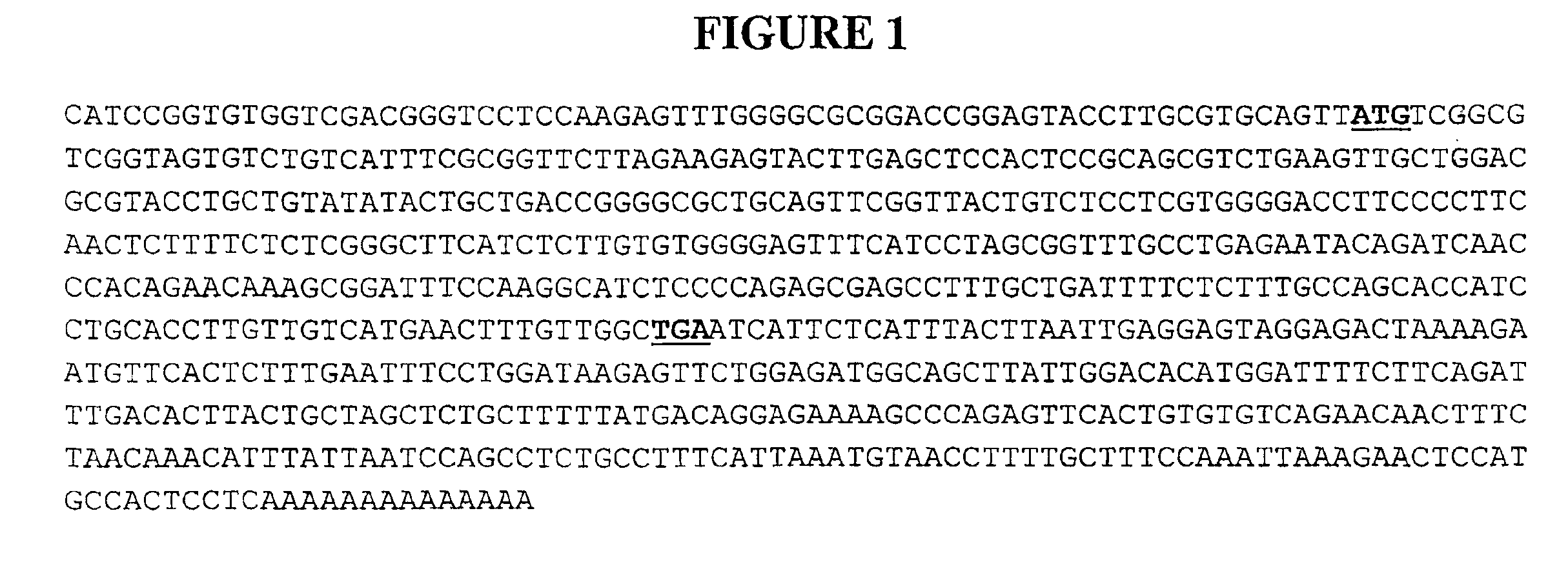Compositions and methods for the treatment of immune related diseases
a technology for immune related diseases and compositions, applied in the field of compositions and methods for the treatment of immune related diseases, can solve the problems of unclear relationship between blood monocytes and tissue macrophages
- Summary
- Abstract
- Description
- Claims
- Application Information
AI Technical Summary
Problems solved by technology
Method used
Image
Examples
example 1
Microarray Analysis of Monocyte / Macrophages
[0309] Nucleic acid microarrays, often containing thousands of gene sequences, are useful for identifying differentially expressed genes in diseased tissues as compared to their normal counterparts. Using nucleic acid microarrays, test and control mRNA samples from test and control tissue samples are reverse transcribed and labeled to generate cDNA probes. The cDNA probes are then hybridized to an array of nucleic acids immobilized on a solid support. The array is configured such that the sequence and position of each member of the array is known. For example, a selection of genes known to be expressed in certain disease states may be arrayed on a solid support. Hybridization of a labeled probe with a particular array member indicates that the sample from which the probe was derived expresses that gene. If the hybridization signal of a probe from a test (in this instance, differentiated macrophages) sample is greater than hybridization sig...
example 2
Use of PRO as a Hybridization Probe
[0315] The following method describes use of a nucleotide sequence encoding PRO as a hybridization probe.
[0316] DNA comprising the coding sequence of full-length or mature PRO as disclosed herein is employed as a probe to screen for homologous DNAs (such as those encoding naturally-occurring variants of PRO) in human tissue cDNA libraries or human tissue genomic libraries.
[0317] Hybridization and washing of filters containing either library DNAs is performed under the following high stringency conditions. Hybridization of radiolabeled PRO-derived probe to the filters is performed in a solution of 50% formamide, 5×SSC, 0.1% SDS, 0.1% sodium pyrophosphate, 50 mM sodium phosphate, pH 6.8, 2× Denhardt's solution, and 10% dextran sulfate at 42° C. for 20 hours. Washing of the filters is performed in an aqueous solution of 0. 1×SSC and 0.1% SDS at 42° C.
[0318] DNAs having a desired sequence identity with the DNA encoding full-length native sequence P...
example 3
Expression of PRO in E. coli
[0319] This example illustrates preparation of an unglycosylated form of PRO by recombinant expression in E. coli.
[0320] The DNA sequence encoding PRO is initially amplified using selected PCR primers. The primers should contain restriction enzyme sites which correspond to the restriction enzyme sites on the selected expression vector. A variety of expression vectors may be employed. An example of a suitable vector is pBR322 (derived from E. coli; see Bolivar et al.,. Gene, 2:95 (1977)) which contains genes for ampicillin and tetracycline resistance. The vector is digested with restriction enzyme and dephosphorylated. The PCR amplified sequences are then ligated into the vector. The vector will preferably include sequences which encode for an antibiotic resistance gene, a trp promoter, a polyhis leader (including the first six STII codons, polyhis sequence, and enterokinase cleavage site), the PRO coding region, lambda transcriptional terminator, and an...
PUM
| Property | Measurement | Unit |
|---|---|---|
| Fraction | aaaaa | aaaaa |
| Volume | aaaaa | aaaaa |
| Pharmaceutically acceptable | aaaaa | aaaaa |
Abstract
Description
Claims
Application Information
 Login to View More
Login to View More - R&D
- Intellectual Property
- Life Sciences
- Materials
- Tech Scout
- Unparalleled Data Quality
- Higher Quality Content
- 60% Fewer Hallucinations
Browse by: Latest US Patents, China's latest patents, Technical Efficacy Thesaurus, Application Domain, Technology Topic, Popular Technical Reports.
© 2025 PatSnap. All rights reserved.Legal|Privacy policy|Modern Slavery Act Transparency Statement|Sitemap|About US| Contact US: help@patsnap.com



